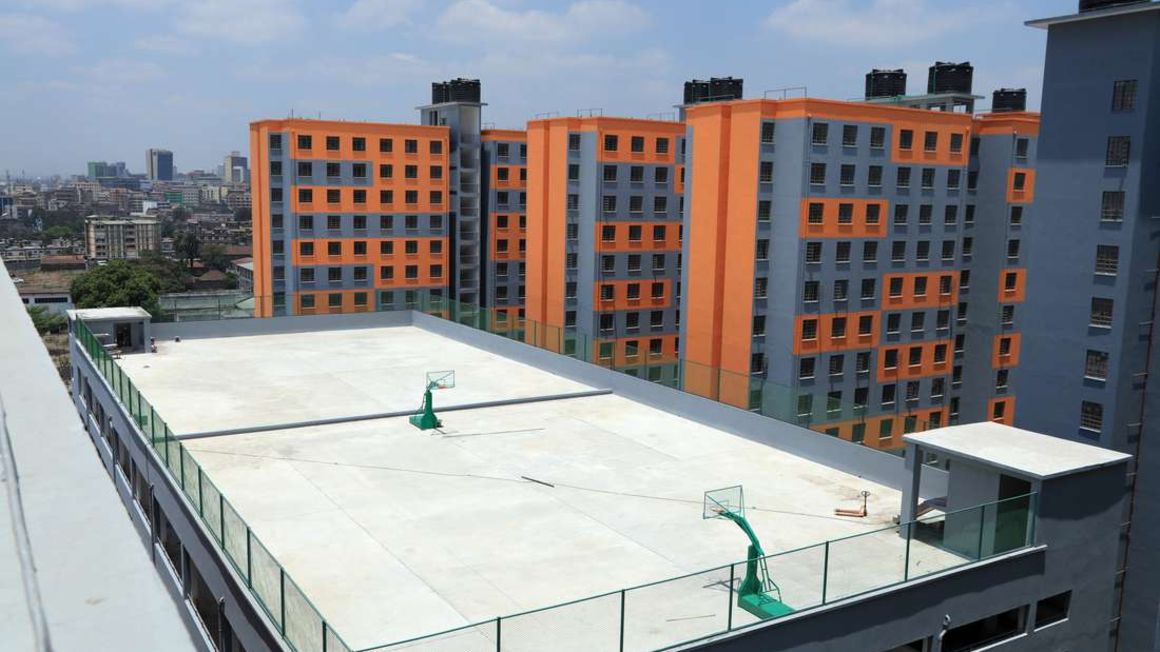
Completed affordable housing project in Ngara, Nairobi on September 18, 2020. PHOTO | JEFF ANGOTE | NMG
When we try to help those in more need than ourselves, we generally give away what we have, or what
we do not need. If we were contributing to a common cause, we may adjust what we are able to contribute depending on our means.It works the same with taxation – those who have and earn more, are taxed more and those who have and earn less are taxed less –or at least that's how it should work – with these contributions meant to be utilised for the public good, on public services such as health, education and social protection.
In so doing, even the poorest have a chance at improving their lives because their basic needs are met by such interventions in the delivery of public services.
The unfortunate truth is that we have never spent as much as we should be spending on public services. In 1991, African Union countries committed to spending at least 15 percent of their annual budgets on the health sector (the Abuja Declaration), and yet Kenya, on average spends only seven percent of its national budget on health.
This means inadequate health services and the well-known fear that Kenyans are only too aware of – which is that we are just one illness away from impoverishing our families.
In allocating resources, it matters not just where funds are allocated but also where the revenue is generated from– especially so when resources are scarce.
If we exempt the rich from paying taxes, for example through tax incentives, and make the poor makeup for the revenue deficits by increasing taxes on goods and services that will adversely affect them more than they would the rich, we are in effect, and in the reverse of Robin Hood, stealing from the poor to give to the rich.
Tax incentives result in foregone revenue for the government. They are potential tax revenue that the government opts not to collect. There may be public policy objectives to tax incentives and the most commonly cited ones include, to attract investment and to promote employment creation. Evidence, however, on whether tax incentives actually result in realising these objectives, is wanting if not contrary.
In a recent study undertaken by Oxfam in Kenya, on tax incentives and exemptions in the Finance Act over the last 10 years, the real estate sector was the main beneficiary of tax incentives.
Tax incentives in real estate particularly benefited the rich as generous incentives were given to high-value investments. One of the most generous tax incentives is the 150 percent investment deduction on buildings outside of Nairobi, Mombasa and Kisumu. To enjoy the incentive, one must make a minimum capital investment of Sh200 million which only the rich can afford.
Developers of residential property benefit from reduced corporate income tax rate but only if the number of units is at least 400. Further, to benefit from capital deduction on residential property, the property must be located in a planned development area and planned development areas are located in middle and upmarket areas. This means that landlords of residential property in low-income areas are not entitled to the tax incentive.
Numerous real estate and mortgaging reports indicate that Kenya’s housing deficit of approximately two million units – which grows 200,000 units every year according to the National Housing Corporation – is in part a result of more focus on high-end as opposed to low-end housing.
While the Affordable Housing Initiative was established as one of the government’s Big Four Development Agenda to address the housing deficit, and several incentives and initiatives aimed at increasing homeownership were introduced including; a tax relief of 15 percent on gross receipts to a limit of Sh108,000 per annum for purchases of residential property made under the affordable housing scheme; and a maximum deduction on interest paid of Sh300,000 per annum for homeowners obtaining mortgages, provided that the taxpayer occupies the property.
It is noteworthy that tax relief and deductions targeting low and medium-income earners are capped and at relatively low amounts per annum, yet tax incentives targeting the rich are not.
Within a context of a growing budget deficit, debt distress and revenue shortfalls, granting incentives of this kind appears wasteful and counterproductive. Newly effected taxes such as the digital services tax and the presumptive, better known as mama mboga tax point to the government’s desperate efforts to raise enough revenues but problematically, they are raising it from lower-income earners rather than from large investors with more than Sh200 million to invest in building housing in upmarket areas that will not address the housing deficit for lower-income earners.
Further, the beneficiaries of tax incentives, the amounts foregone and the cost-benefit analyses justifying these revenues foregone have never been published – demonstrating deliberate opacity and state capture by the political elite. Harmful incentives are a violation of the right to development and only compound existing inequalities.
It is time we published the beneficiaries of tax incentives, the revenues foregone and evidence of the justifications for foregoing these revenues. It is time we also scrutinized the process by which tax incentives are granted.
Riva Jalipa is the Tax Justice Strategist for Oxfam in Kenya.




No comments :
Post a Comment